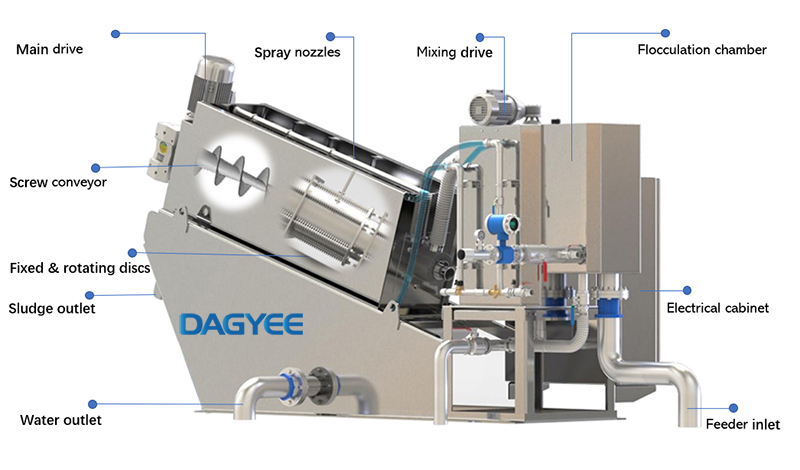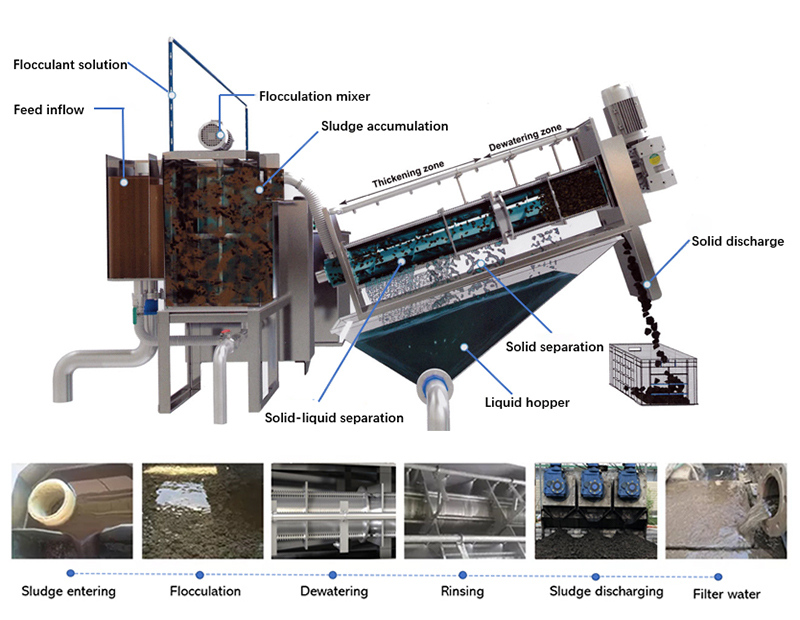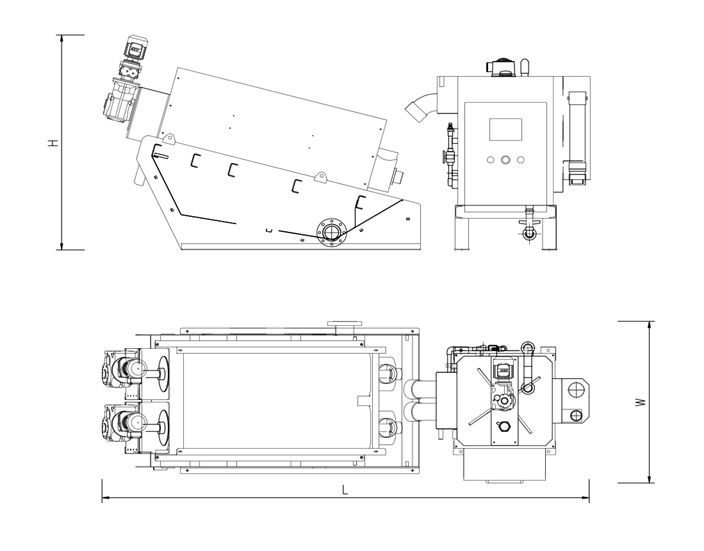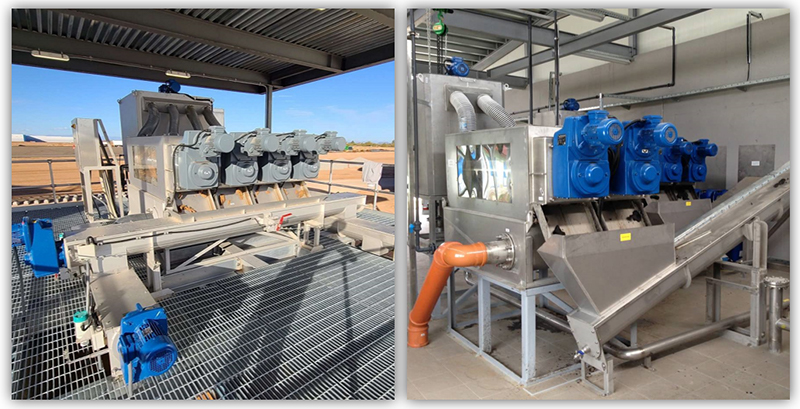
Sludge Dehydrator Description
Sludge produced in municipal and industrial wastewater treatment plants requires dewatering prior to further treatment or utilisation. In view of increasing sludge disposal costs it has become necessary to concentrate the sludge to a high solids content.
DAGYEE offers for this purpose commonly known systems for continuous sludge dewatering, e.g. belt filter presses and screw presses.

Sludge Dehydrator Process
Sludge dewatering is the process of separating solid and liquid sludge components to minimize sludge disposal. Often polymer flocculants are also added prior to sludge dewatering (using powder dosing system) to help the solid-liquid separation process.
Instead of treating sludge or liquids, the sludge dewatering facility will separate liquid and solid components, making it easier and cost effective to treat the different treatment stages. After final sludge dewatering, the liquid is treated in ETP/STP and the solid sludge is disposed of.
The main purpose of sludge dehydrators is to minimize treatment and disposal. Sludge dehydrators are the most cost-effective method of dehydration and therefore help to maintain the company’s environmental objectives.

Sludge Dehydrator Model

Model
DL303
DS
capacity kg/h
90--150 kg/h
Sludge capacity m3/h(2-50g/L)
3-45
Spiral diameter mm
¢310*3
Discharge
Distance mm
495
Size L*W*H
mm
3605*1690*1600
Net.Kg
1520
Run Kg
3080
Power
Kw
1.86
Washing Q L/h
120
Sludge Dehydrator Advantages
Sludge Dehydrator Features
Optimize your wastewater sludge dewatering and sludge thickening
VecFlow™ technology delivers outstanding performance in wastewater sludge thickening and dewatering. The unique VecFlow™ feed zone of Aldec G3 decanters minimizes turbulence and reduces power consumption by up to 30% compared to traditional decanter centrifuges.
Minimal turbulence for maximum performance
Aldec G3 decanter centrifuges equipped with VecFlow™ technology for sludge thickening gives you maximum performance with minimal turbulence. Alfa Laval’s unique VecFlow™ sludge centrifuge feed zone reduces turbulence by more than 80% compared to traditional decanter centrifuges and cuts acceleration power by 40-50%.
Gentle acceleration
A traditional feed zone injects the sludge radially into the decanter bowl, continuously disturbing the internal flows and causing turbulence. A VecFlow™ feed zone, on the other hand, gives the feed a completely different flow path since it accelerates the sludge tangentially when entering the bowl of the decanter centrifuge.
Sludge centrifuges with better separation performance
Apart from reducing total power consumption in sludge thickening, the low turbulence also improves separation performance. The separation is more effective than in a traditional decanter centrifuges, with less break-up of flocs. Additionally, the efficient acceleration to full speed reduces wear on the conveyor.
Cut OPEX
Depending on your specific sludge-thickening requirements, you may wish to minimize polymer consumption, increase the dryness of the cake or boost capacity. The high separation performance in thickening and low power consumption leads to a low total cost of ownership and very short payback times. You often get a full return on your investment in less than one year.
Sludge Dehydrator Application


Name: Ashely Li
Mobile:+8613961861780
Tel:+8613961861780
Whatsapp:8613961861780
Email:info@dagyee.com
Add:Room 302, Building 11-4, Hongyi Road, Xinan Town, Xinwu District, jiangsu Province, China